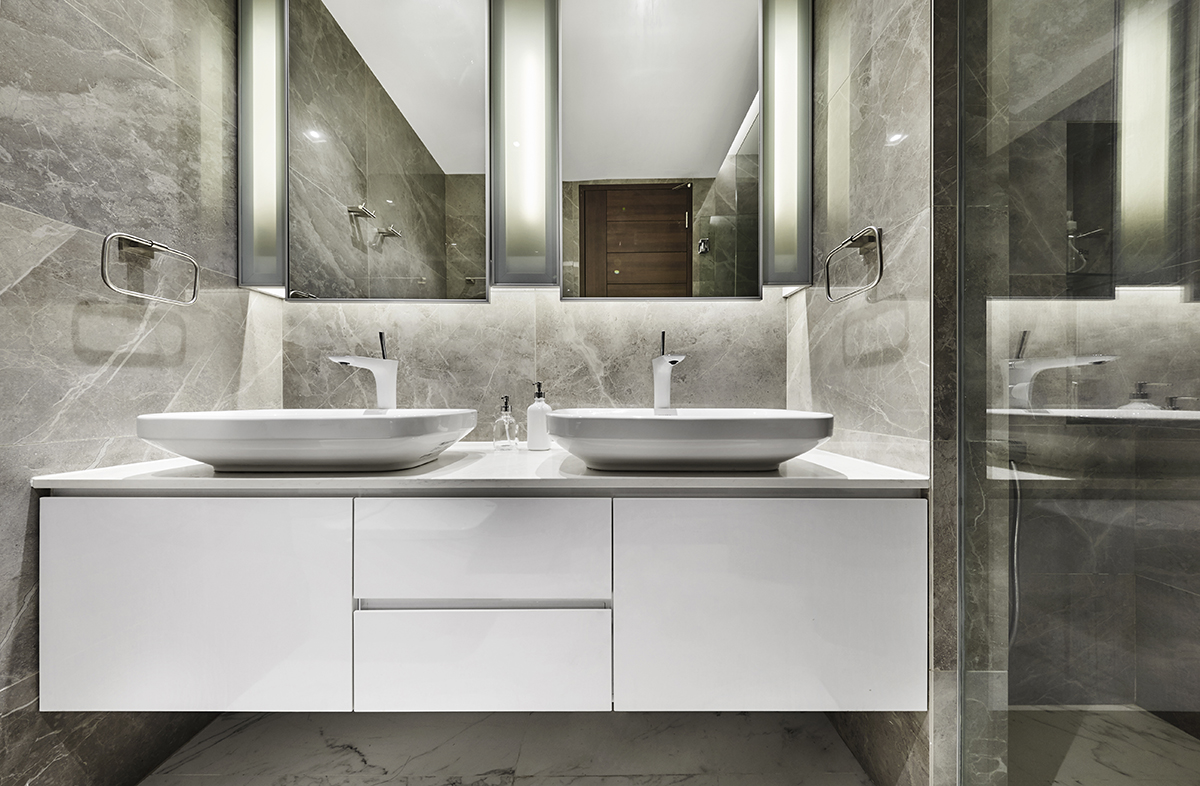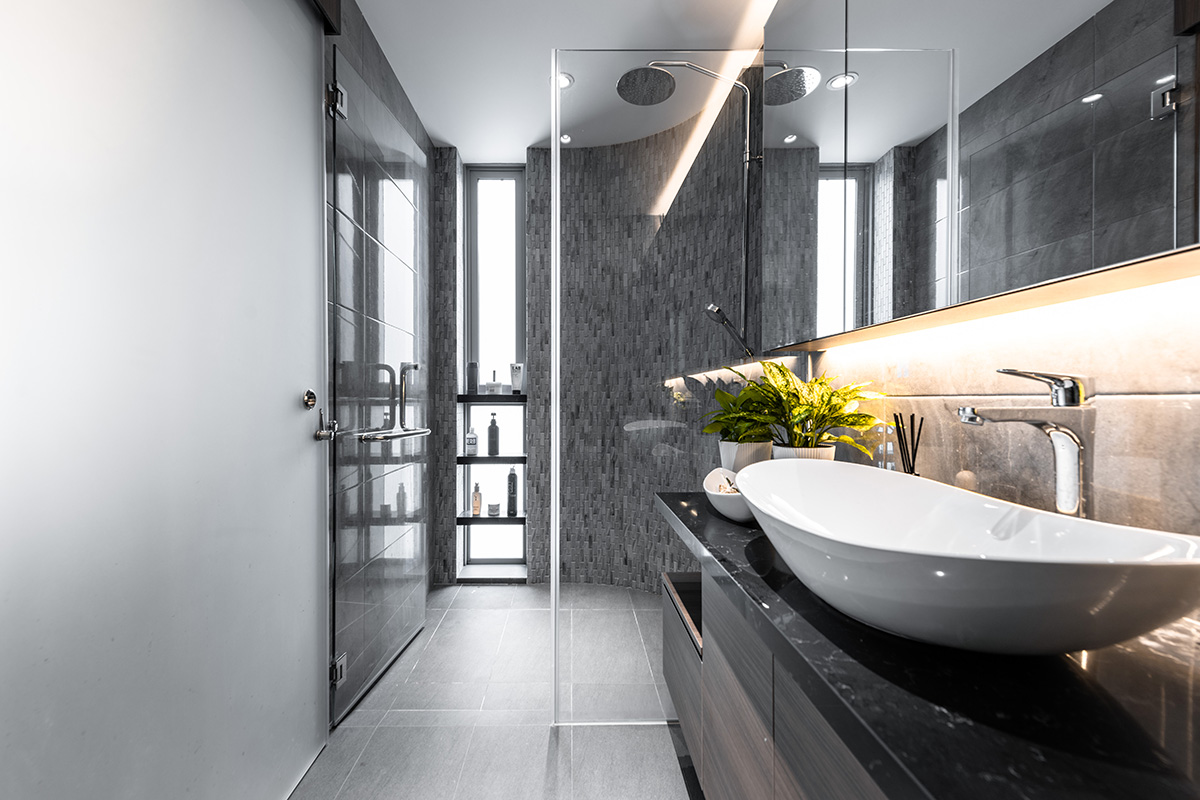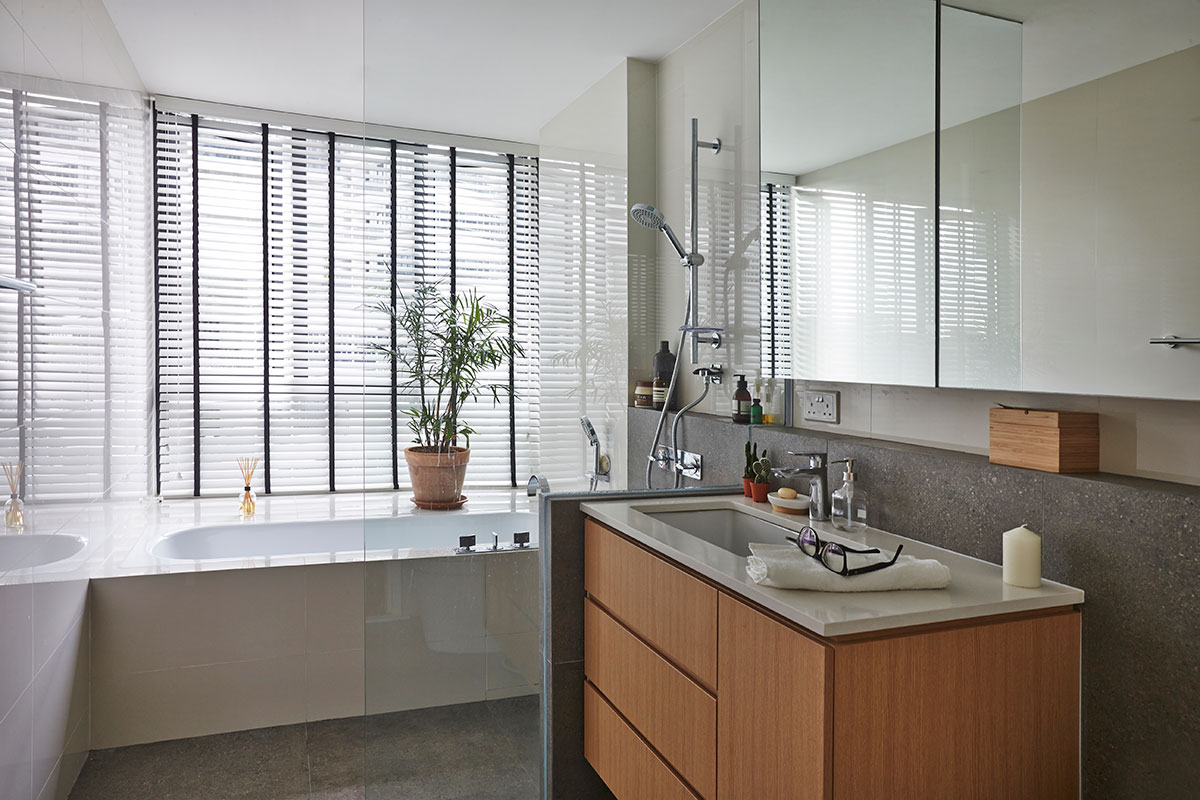Mould is common in households all over the world, but our hot and humid weather particularly lends itself to this unwanted substance. Mould is found especially often in the bathroom as this space tends to have the highest humidity in the house—just think of the dripping shower walls, moist cabinets and wet floors! Bathrooms seem to never be fully dry and this is what attracts so much mould. If you’re wondering how you can prevent it in your own bathroom, read on for our top tips.
- Keep the space ventilated and dry
This should be your top priority in every room of the house, but especially in the bathroom. If your bathroom is not properly ventilated, your floors, walls, fittings, cabinets and rugs won’t be able to dry and will instead remain humid throughout the day. This consistent humidity is the perfect condition for mould to grow, so you want to make sure that you open the windows or turn on the fan after every shower to air out the space. Additionally, try to mop the floors and wipe down wet furnishings to help them dry faster. If you’re still not satisfied, get hold of a dehumidifier for your bathroom. Image courtesy of akiHAUS
Image courtesy of akiHAUS - Clean your bathroom frequently
Mould doesn’t just like heat and humidity, it also loves organic material. To stop it from growing, keep the bathroom clean, replacing soft furnishings often. Rugs and towels can get surprisingly dirty in just a few days as they come in contact with our bodies more closely than the rest of the bathroom, so it’s important to wash them frequently. While you’re at it, it’s good practice to store your shower items on racks (as opposed to solid shelves) in order to allow the water to drain. It will save you lots of cleaning time in the long run! Image courtesy of The Orange Cube
Image courtesy of The Orange Cube - Fix leaks and seal grout
Spotted a leak around the bathroom sink? It’s crucial that you fix it before your cabinets, walls and floors suffer water damage and develop mould. You should also keep an eye on the tiles on both the floors and walls, as they may get cracked and the grout may wear out over time. Keeping your tiles in good shape will ensure that they’re waterproof and, consecutively, mould-free. - Opt for mould-resistant furnishings
Not every material is affected by mould the same way. Soft, porous materials such as plywood and drywall are particularly prone to mould growth, while rugs tend to grow mould if they’re dusty and haven’t been washed in some time. Covering your walls and floors with waterproof tiles and sealing plywood cabinets is important to avoid mould growth. We also recommend opting for a cotton bath mat as cotton is a fairly absorbent material. Image courtesy of Three-D Conceptwerke
Image courtesy of Three-D Conceptwerke - Remove mould as soon as you spot it
If you’ve already spotted some mould in your bathroom, tackle it before it can spread further. You can buy a commercial mould removal spray or alternatively use what you already have at home. To go the second route, we recommend using either hydrogen peroxide or distilled white vinegar. Test your solution on a small area first to ensure that it won’t cause discolouration, then coat the mouldy spots and let everything rest for one hour. Scrub the mould away, clean up with some water and wipe the area dry. Make sure to follow the other tips above to prevent the mould from coming back!
Featured image courtesy of Studio Wills + Architects



